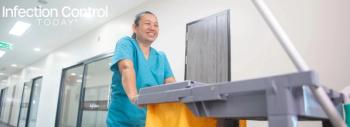
Study Demonstrates School Flu Immunization Reduced Student Absences
Results from a new study found that free, on-site, mass flu immunization had a positive impact on school attendance. With the help of school nurses, more students may be able to avoid getting sick in the next flu season. The study is published in the latest issue of the Journal of School Nursing.
School nurses in Indiana, where the study was conducted, found that schools that have a high population of children with a low socioeconomic status were showing a higher absentee rate caused by influenza. Many of these children lived in multifamily dwellings, where there is increased person-to-person contact, which promotes the spread of bacteria and viruses. Although influenza vaccines were available in the community, these families often did not have the funds or transportation to receive preventive health care.
The benchmark attendance rate for the state of Indiana in the 95th percentile is 97.8 percent. School nurses noted that none of the local Title 1 schools met this benchmark. Title 1 is a federal entitlement program allocated on the basis of student enrollment and census poverty data. As part of the No Child Left Behind Act, children should have the opportunity to obtain a high quality education and to reach grade-level proficiency.
In the study, two Title 1 elementary schools received the FluMist® vaccine and two others did not. Fifty-seven percent of those medically eligible to receive the vaccine had parental permission and took it. The two schools receiving FluMist® increased their attendance rates from 95.3 percent and 93.95 percent to 96.1 percent and 95.8 percent, respectively. The schools that did not receive the vaccine had a decrease in overall attendance.
The 57 percent vaccination rate may have created herd immunity and protected a larger number of children than those who were immunized. Regardless, the mass immunization produced positive results. In areas where immunization rates are low and parents do not have the resources for immunization services, the study encourages school nurses to work with community organizations to provide free, on-site services.
Newsletter
Stay prepared and protected with Infection Control Today's newsletter, delivering essential updates, best practices, and expert insights for infection preventionists.






